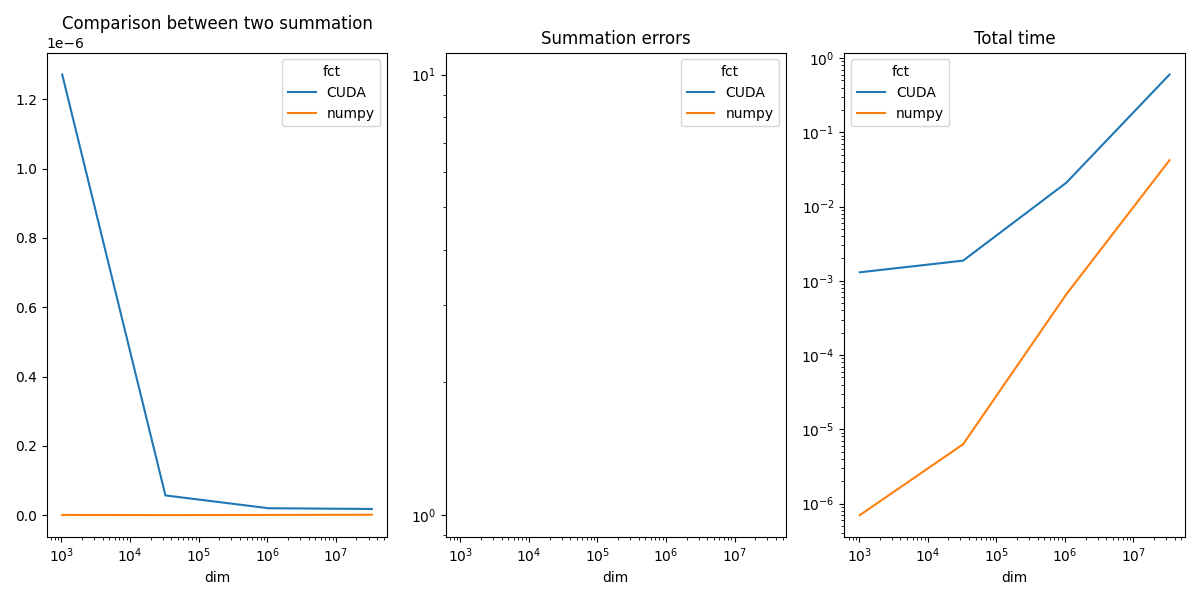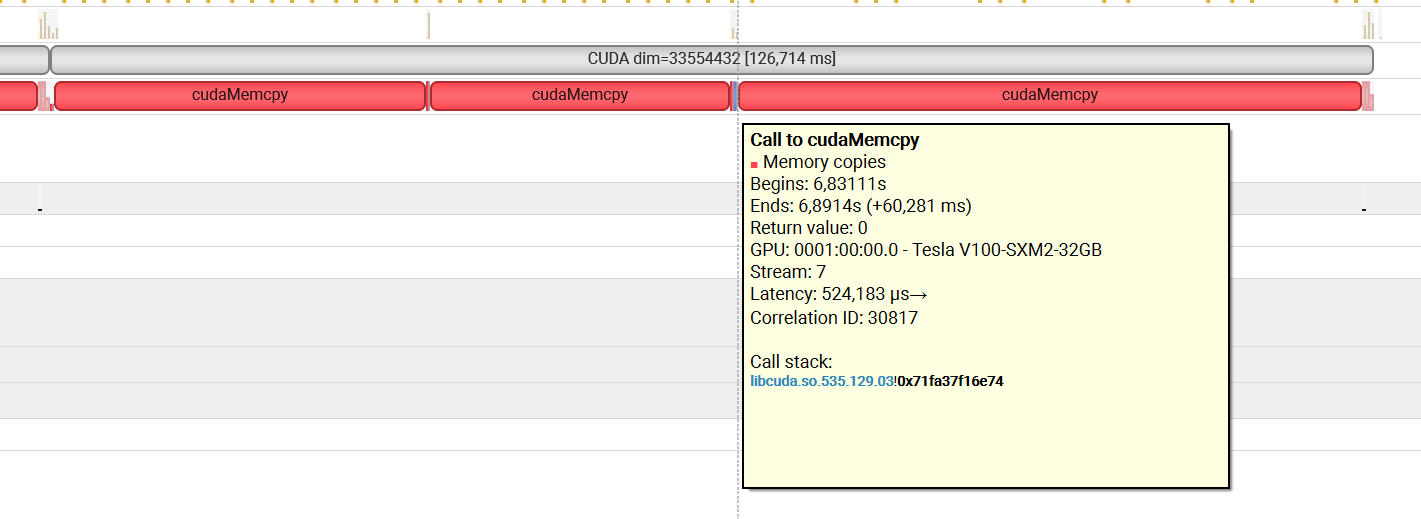Note
Go to the end to download the full example code.
Measuring CUDA performance with a vector addition¶
Measure the time between two additions, one with CUDA, one with numpy. The script can be profiled with Nsight.
nsys profile python _doc/examples/plot_bench_cuda_vector_add.py
Vector Add¶
from tqdm import tqdm
import numpy
import matplotlib.pyplot as plt
from pandas import DataFrame
from teachcompute.ext_test_case import measure_time, unit_test_going
import torch
has_cuda = torch.cuda.is_available()
try:
from teachcompute.validation.cuda.cuda_example_py import vector_add
except ImportError:
has_cuda = False
def cuda_vector_add(values):
torch.cuda.nvtx.range_push(f"CUDA dim={values.size}")
res = vector_add(values, values, 0)
torch.cuda.nvtx.range_pop()
return res
obs = []
dims = [2**10, 2**15, 2**20, 2**25]
if unit_test_going():
dims = [10, 20, 30]
for dim in tqdm(dims):
values = numpy.ones((dim,), dtype=numpy.float32).ravel()
if has_cuda:
diff = numpy.abs(vector_add(values, values, 0) - (values + values)).max()
res = measure_time(lambda values=values: cuda_vector_add(values), max_time=0.5)
obs.append(
dict(
dim=dim,
size=values.size,
time=res["average"],
fct="CUDA",
time_per_element=res["average"] / dim,
diff=diff,
)
)
diff = 0
res = measure_time(lambda values=values: values + values, max_time=0.5)
obs.append(
dict(
dim=dim,
size=values.size,
time=res["average"],
fct="numpy",
time_per_element=res["average"] / dim,
diff=0,
)
)
df = DataFrame(obs)
piv = df.pivot(index="dim", columns="fct", values="time_per_element")
print(piv)
0%| | 0/4 [00:00<?, ?it/s]
25%|██▌ | 1/4 [00:01<00:04, 1.59s/it]
50%|█████ | 2/4 [00:02<00:02, 1.28s/it]
75%|███████▌ | 3/4 [00:04<00:01, 1.36s/it]
100%|██████████| 4/4 [00:05<00:00, 1.53s/it]
100%|██████████| 4/4 [00:05<00:00, 1.47s/it]
fct CUDA numpy
dim
1024 1.298515e-06 8.808301e-10
32768 7.051319e-08 1.746531e-10
1048576 7.472719e-09 5.710179e-10
33554432 3.783167e-09 1.137362e-09
Plots¶
piv_diff = df.pivot(index="dim", columns="fct", values="diff")
piv_time = df.pivot(index="dim", columns="fct", values="time")
fig, ax = plt.subplots(1, 3, figsize=(12, 6))
piv.plot(ax=ax[0], logx=True, title="Comparison between two summation")
piv_diff.plot(ax=ax[1], logx=True, logy=True, title="Summation errors")
piv_time.plot(ax=ax[2], logx=True, logy=True, title="Total time")
fig.tight_layout()
fig.savefig("plot_bench_cuda_vector_add.png")

~/vv/this312/lib/python3.12/site-packages/pandas/plotting/_matplotlib/core.py:822: UserWarning: Data has no positive values, and therefore cannot be log-scaled.
labels = axis.get_majorticklabels() + axis.get_minorticklabels()
CUDA seems very slow but in fact, all the time is spent in moving the data from the CPU memory (Host) to the GPU memory (device).

Total running time of the script: (0 minutes 10.001 seconds)